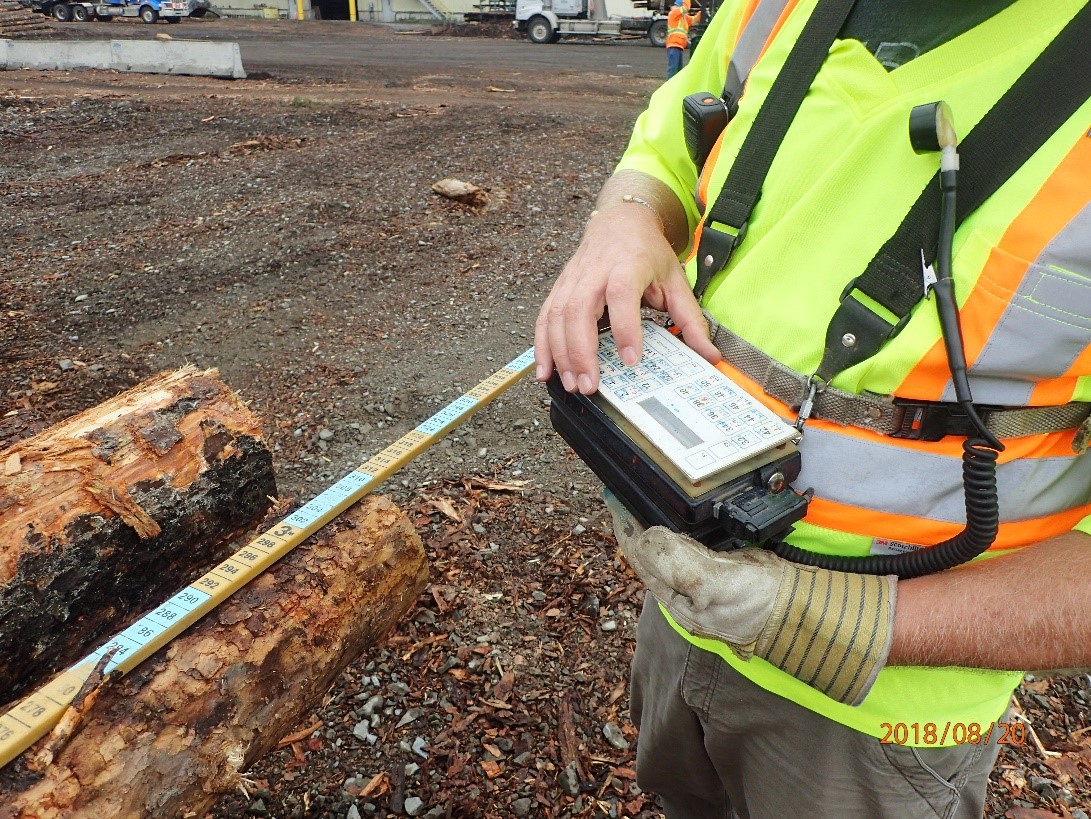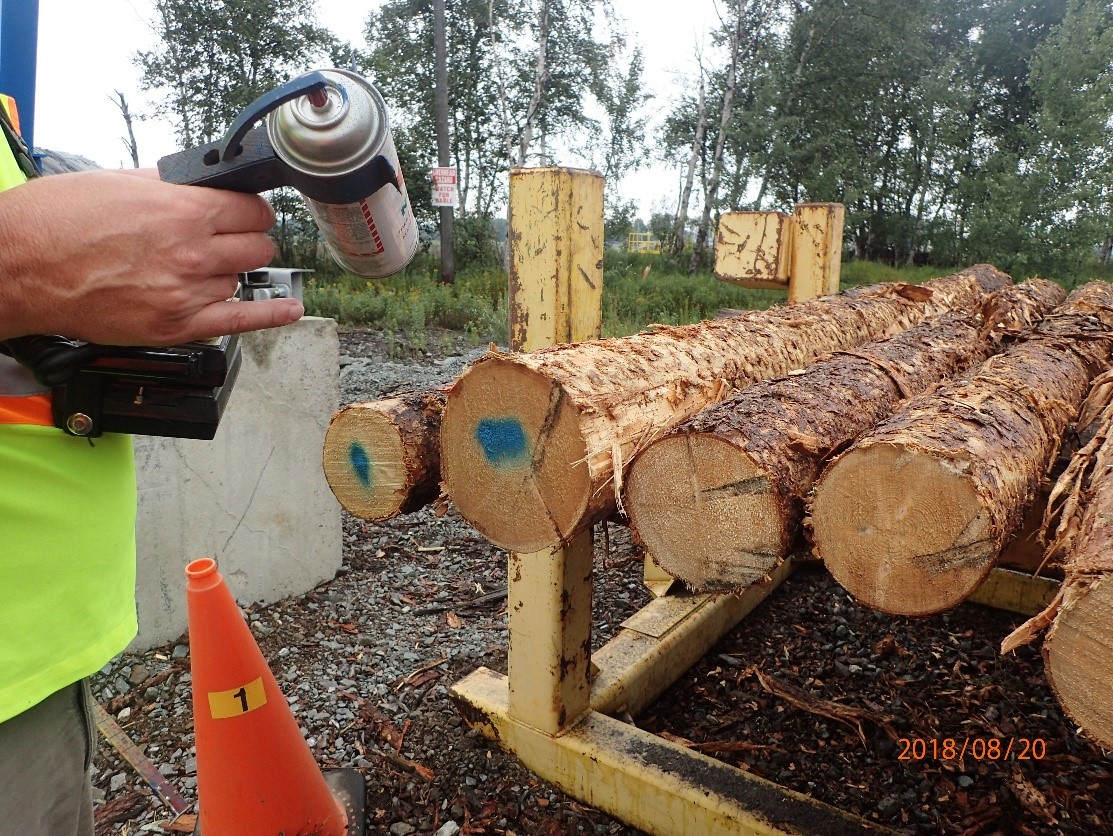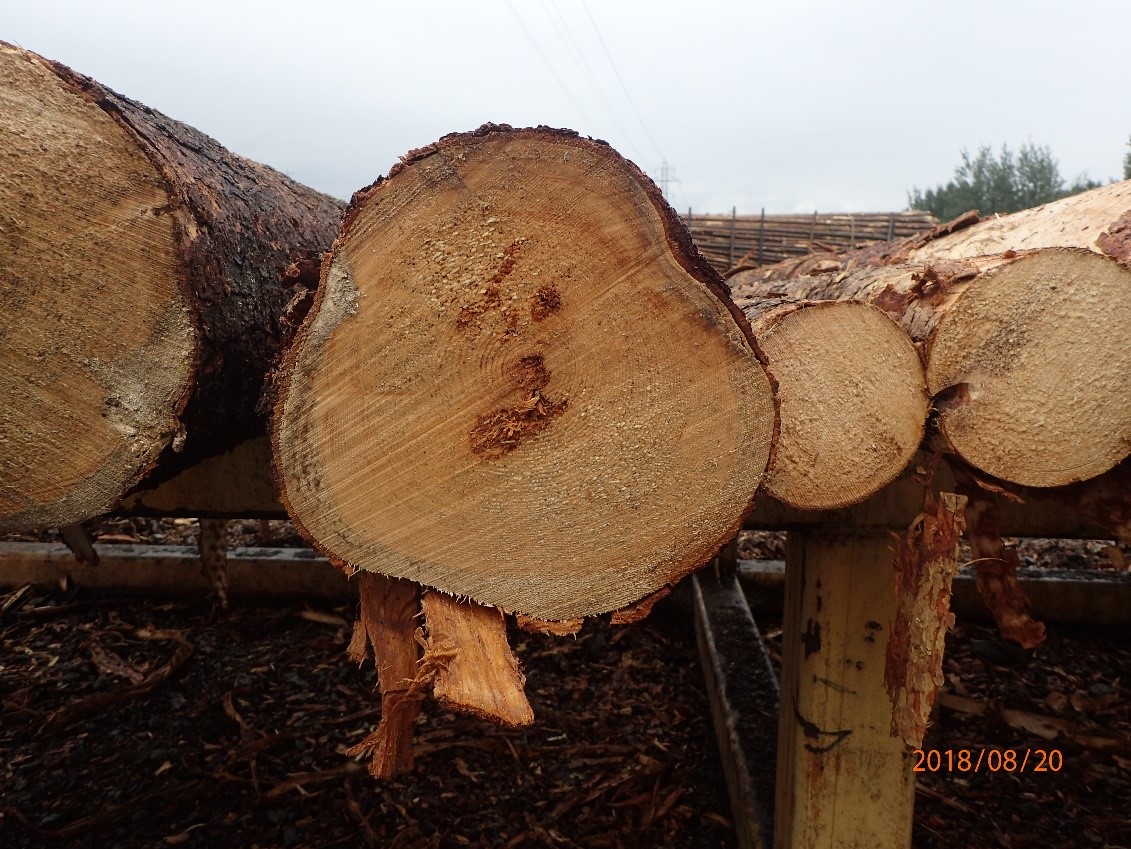QUALITY MAKES A DIFFERENCE
August 29, 2018 9:27 am Leave your thoughts
Hey readers!
Well, it’s officially my last week at Resolute, as their Woodlands Operations Intern for the summer of 2018! Already, my week is off to a great start! But, what else is new?! Last week, I wrote a blog on the log quality checks that are complete by the Woodlands Operations team, including myself, in Resolute’s harvesting operations. Also mentioned, was where to go blueberry picking around Thunder Bay! If you happened to miss my previous blog and didn’t get a chance to read it, please go read it and come back to this one! For those that did read my previous blog, thank you! But, before you go, I will let you know now, that the season to forage for wild blueberries is over – unfortunately! So, you’ll have to until next August. Wild blueberries are exceptional, so they’re worth the wait! In today’s blog, I wanted to elaborate on log quality, but in the Thunder Bay sawmill. So, sit back, relax and read!
It was last Monday that I made my way over to the Thunder Bay sawmill, to meet up with two of Resolute’s log scalers. I had planned a day to meet with them, to learn how they complete their own log quality checks in the mill yard. Log scalers determine the scale (volume) and quality (grade) of the saw logs that are delivered to the sawmill. They sample a portion of a delivery, which determines the monetary value for the delivery.
When a log-haul truck enters the Thunder Bay sawmill, carrying cut-to-length or tree-length saw logs, the driver is required to stop at the scales to first weigh-in their truck. The weight scale calculates the gross-weight of the log-haul truck. Then, the driver is required to exit their vehicle to enter the bill of lading into a computer that is located at the scales. The bill of lading contains information on the product that is delivered, the contractor, the harvest block number, the approval number and other information pertaining to the driver. This information is provided by the loader operator, which is the individual who loads the saw logs onto the log-haul truck. Once the driver has completed this process, a transaction ticket is printed from the computer at the scales. This transaction ticket authorizes the driver’s delivery.
Sometimes, the transaction ticket requires the driver of the log-haul truck to have their delivery sampled by the log scalers. This is the log scalers favourite part! They finally get to work their magic! I have included a series of photos below to display the process.
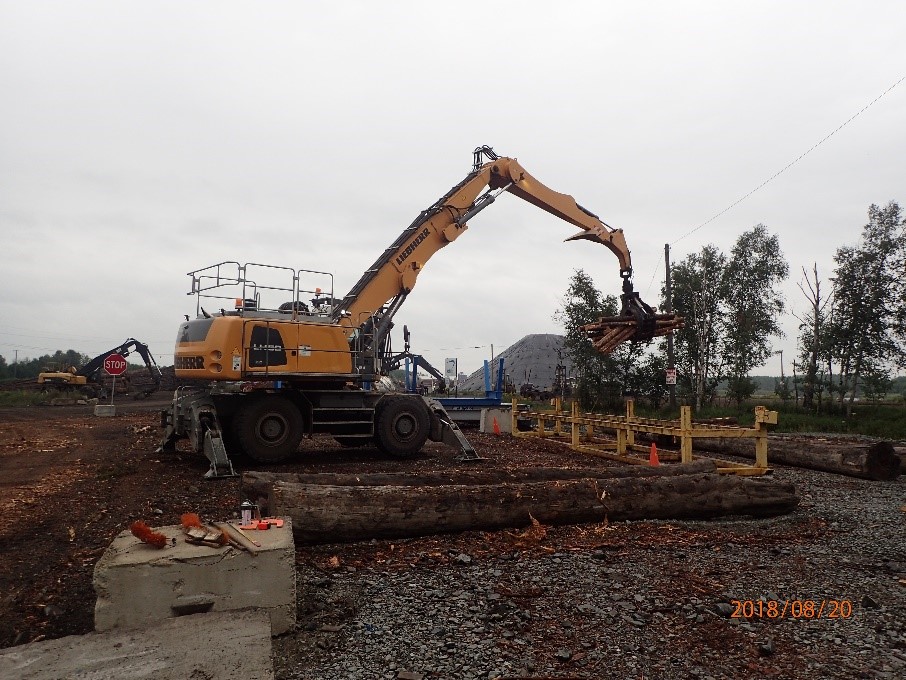
First, a loader operator assists the log scalers by lifting and carrying the sample. A sample is approximately 20 to 30 saw logs.
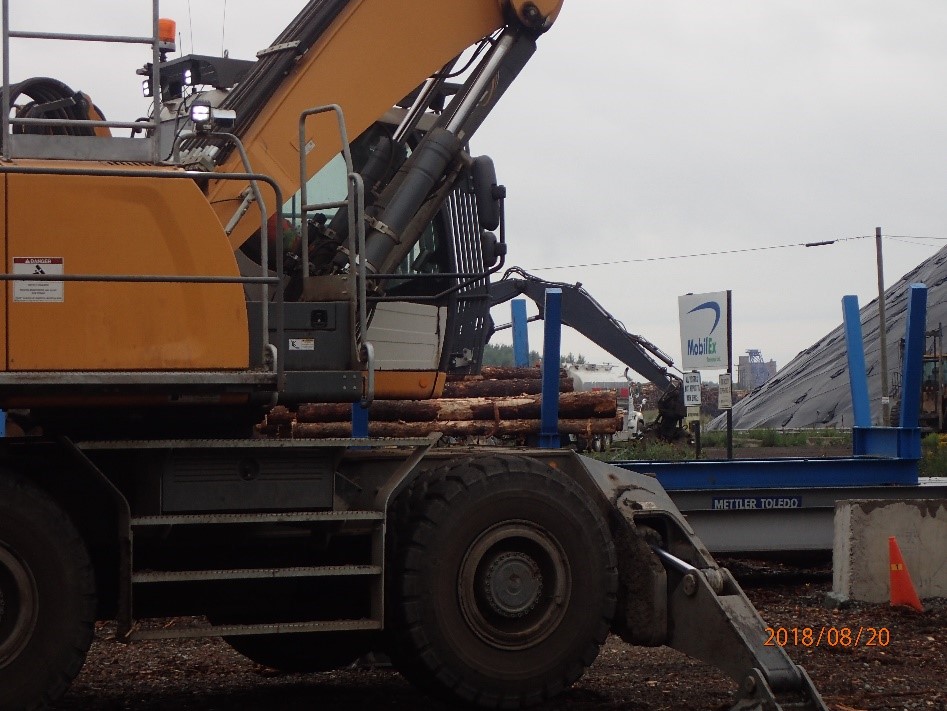
Then, the loader operator places the saw logs onto the blue weight scale. A sample must weigh a minimum of 1000 kilograms.
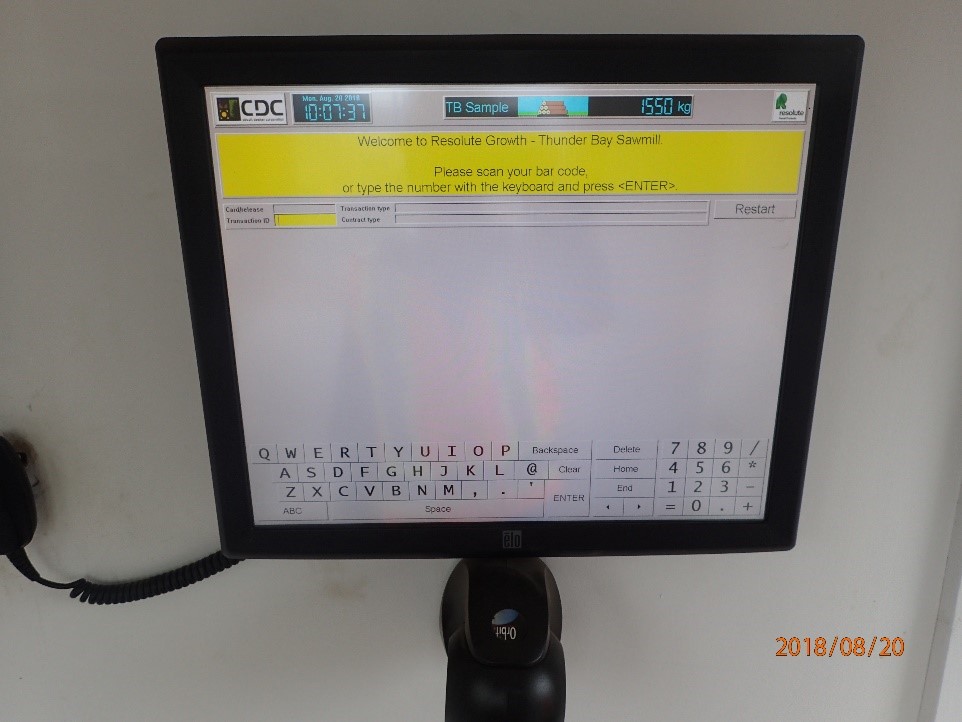
The weight of the saw logs is recorded on this computer. You can see in the photo above, that the sample weighed 1550 kilograms; this is an acceptable sample weight.
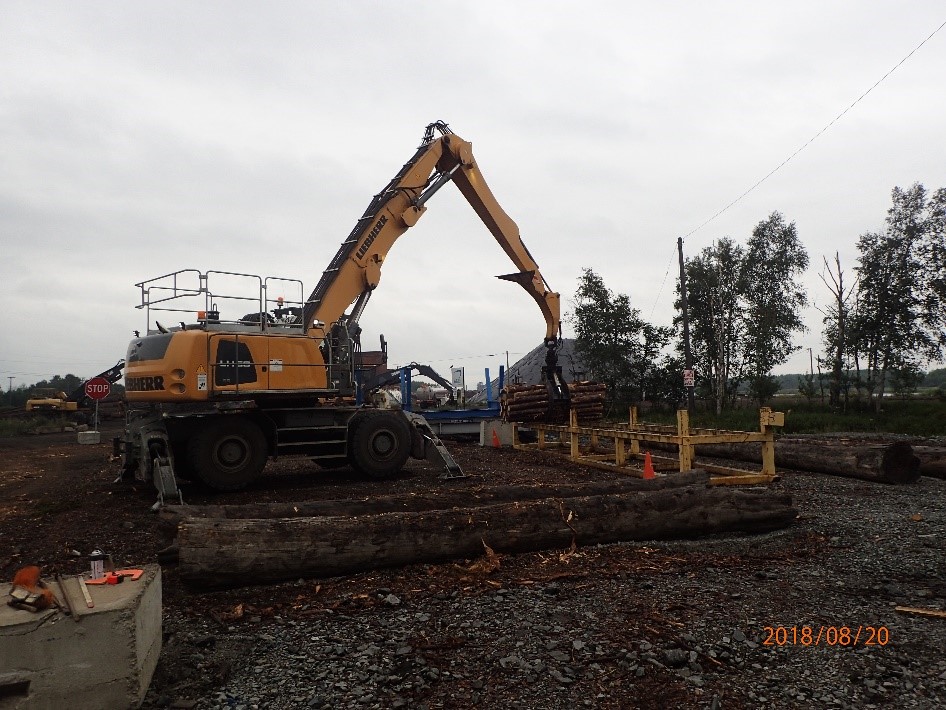
Once the sample has been weighed, the saw logs are lifted from the scales and moved to the sample rack.
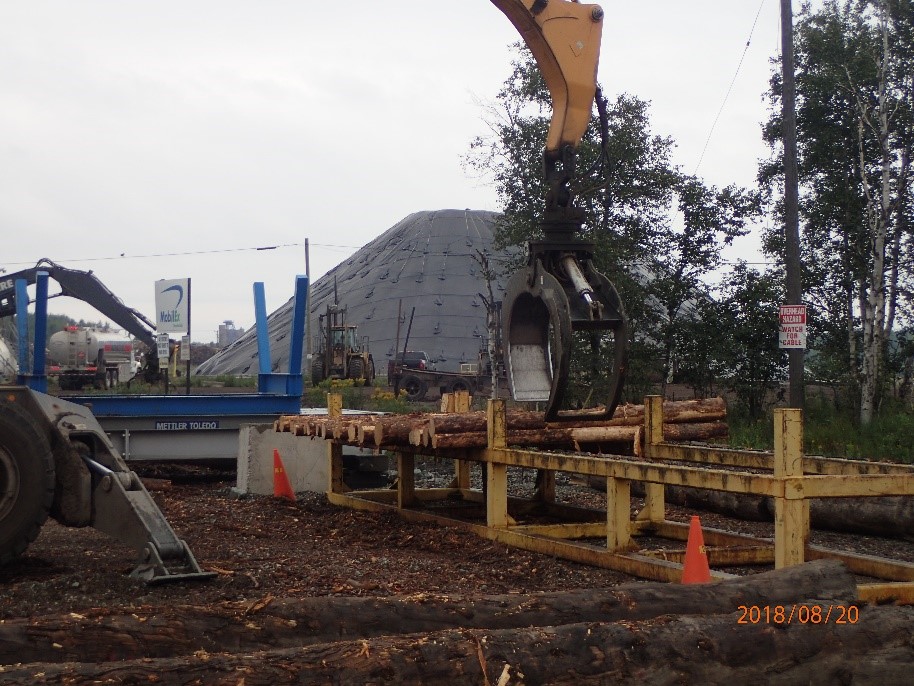
The loader operator evenly spreads the logs on the sample rack; ensuring the saw logs are lying flat.
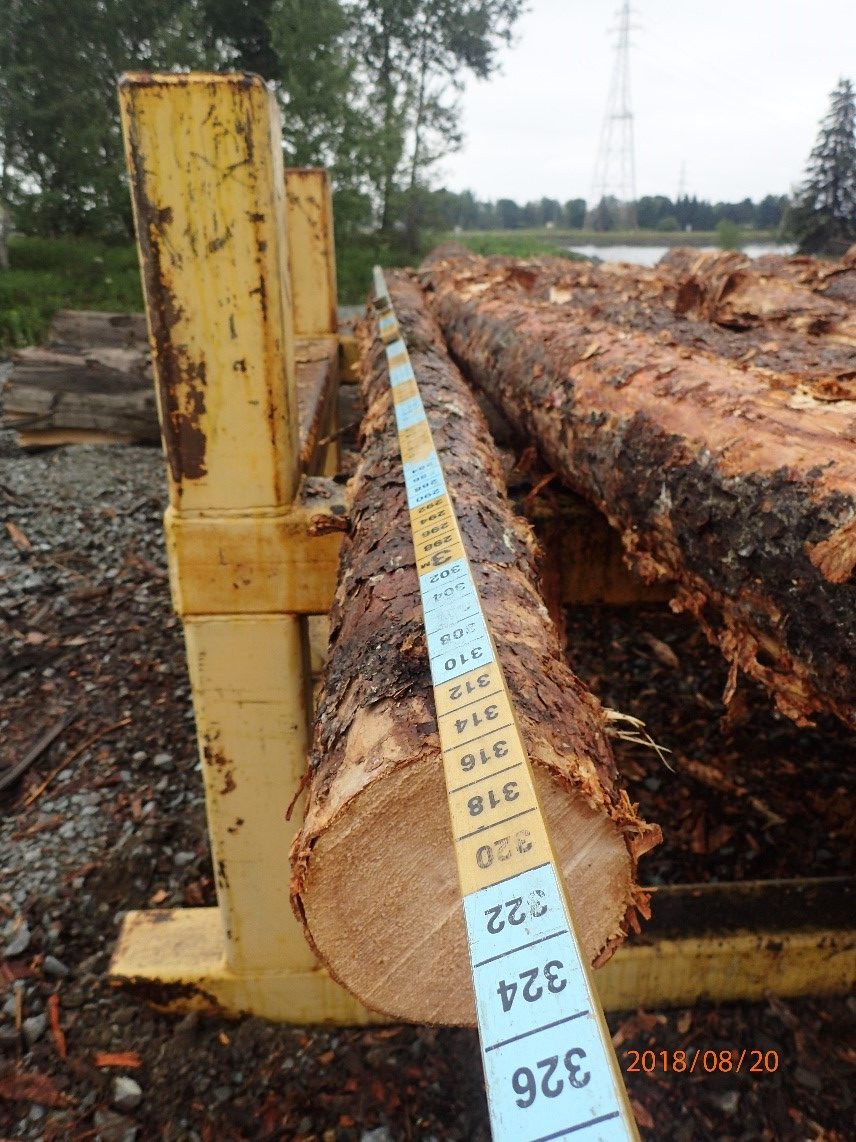
The first step is to measure the length of each saw log. The log scalers use this scale stick to measure the lengths. This is a 10-foot or 3.14-metre (cut-to-length) spruce saw log.
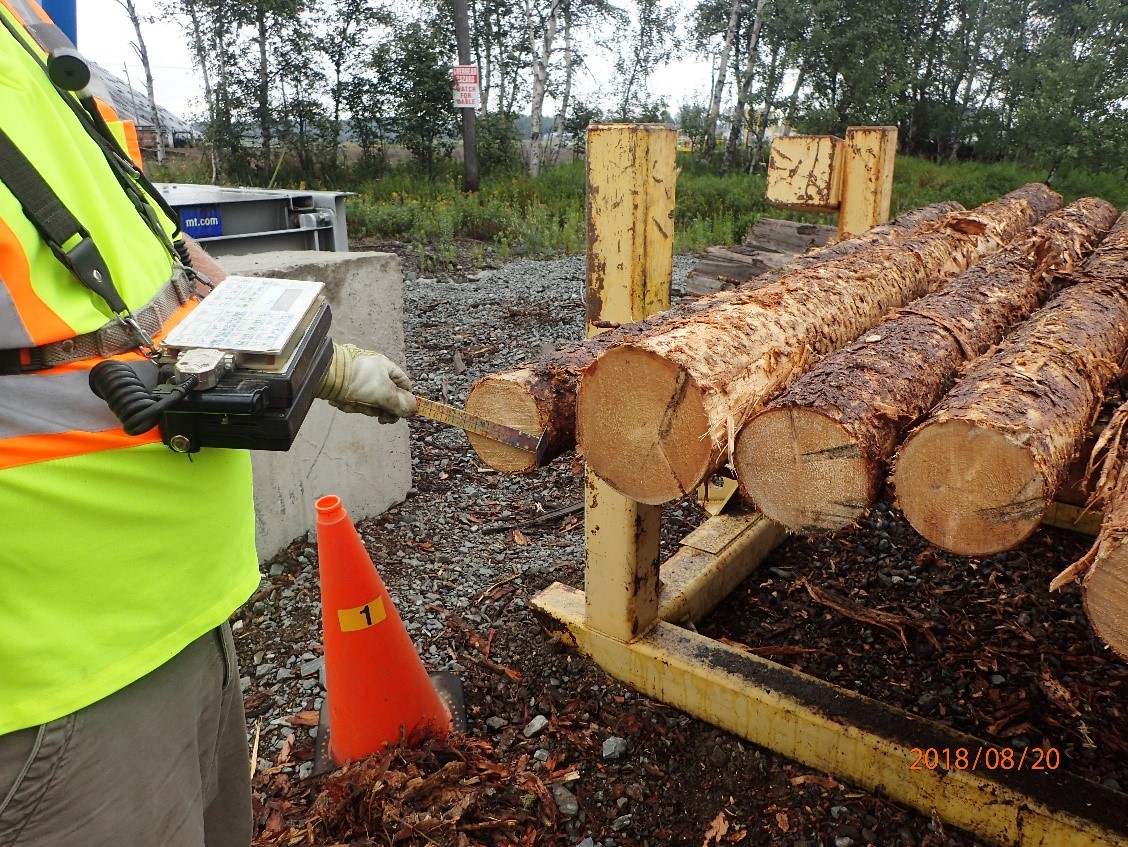
The next step is to measure the diameter of each saw log. They use a smaller scale stick to measure this. At this point, the log scaler is also looking for any natural or mechanical defects in the butt of the log.
If a defect is observed in the sample, it is also recorded on the Mynic. This photo displays a natural defect, which is rot. The diameter of the rot is measured and recorded.
Once the sample is complete, the log scalers connect the Mynic to their computer and input the data electronically. A log quality score sheet is produced from this information and it is sent to the contractor. The log scalers send this information to alert the contractor of any issues that may have been observed in the sample. One common issue that is observed by the log scalers is too short or too long cut-to-length logs. This can occur when the contractors do not regularly measure the lengths of the saw logs that are produced. It can also occur when the harvesting equipment is not regularly maintained. The machines calibration could be off or the saw blades on the machine may be dull. It is very important that the contractors regularly maintain their equipment as well as observe and monitor their work.
When it is time to exit the mill yard, the driver is required to scale-out. They are required to drive over the weight scale again, which will calculate the weight of the truck without the load on it. This is referred to as the net weight. By obtaining the gross and net weight, the log scalers can calculate the total weight of the wood that was delivered to the mill yard. The driver receives a paper receipt for their delivery and they off on their way!
So, all in all, this was my day in the Thunder Bay sawmill! I had a great day working with the log scalers and I’m very happy that I learned how to scale wood! After writing these two blogs on log quality, I feel confident in my ability to identify natural and mechanical defects in saw logs and I can confidently complete log quality checks in the field. Even on my last week, I’m still learning something new! But, maybe that’s just me – always striving to learn something new every day.
Thanks for reading, my friends.

